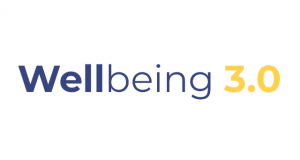

One Question to Ask Employees So They Don’t Leave
In Mental Health America’s (MHA) 2021 Mind The Workplace Report, data from more than 50,000 employees shows that employees are not receiving enough emotional support from supervisors to help manage their stress (58%) or their mental health (85%). While employees struggled to manage their stress and mental health pre-pandemic, these issues have only gotten worse in the past year and a half.
Although many organizations have a renewed focus on wellbeing in 2021, many employer-provided solutions still lack a genuine understanding of where people are and what type of support they truly need. With managers and benefits leaders also experiencing burnout, it’s easier to see these struggles as a collective issue—a reality illustrated by a 2021 Indeed study on burnout.
Indeed reported that more than half (52%) of respondents feel burned out. And unfortunately for organizations, burnout is just one factor contributing to the Great Resignation. NPR reports that “as pandemic life recedes in the U.S., people are leaving their jobs in search of more money, more flexibility, and more happiness.” In June 2021, the resignation level increased to 3.9 million (2.7%).
As a business or benefits leader, you’re rightly concerned about attrition and turnover. Gallup reports that U.S. businesses lose a trillion dollars every year to voluntary turnover, with the cost to replace an individual employee ranging from one-half to two times their annual salary.
How can you keep your employees from leaving?
One Question to Ask Employees So They Don’t Leave
If you don’t want employees to leave, start consistently asking them one question: How are you doing, really?
Adding ‘really’ to the end of this question is a crucial detail. It transforms a question normally seen as routine small talk into an intentional check-in. This prompt can uncover what an employee needs to be healthy and successful by revealing what they currently lack.
Although this type of check-in may seem obvious, research shows that it’s not. In a Qualtrics study conducted in April 2020, 38.2% of people said their company had not even asked them if they were doing okay (and these people were 38% more likely to say their mental health had declined).
If you want to improve employee retention, ask folks if they’re okay. Even though we’re well into the pandemic, this remains an essential check-in question. And perhaps more importantly, when an employee responds, be prepared to reply with compassion and connect them with relevant resources.
How to Support Employees
When an employee opens up about something they’re struggling with, you won’t always know how to respond. And as tempting as it may be to fix the issue, there’s not always an immediate solution to their problem. Make space for people to share what they’re experiencing and familiarize yourself with available resources.
When an employee is experiencing stress
If a team member shares that they’re stressed—a rate that reached a record high in 2020 (43%)—check that the employee is taking regular breaks and requesting time off. At some point in your conversation, ask something like, “When is your next scheduled day off?” If you’re in a position to grant someone time off, follow through; And also, model this type of self-care by taking time off yourself.
When an employee is struggling financially
Recent findings from the Pew Research Center show that 51% of non-retired adults say the economic impact of COVID-19 will make it harder for them to achieve their long-term financial goals—a reality that disproportionately impacts lower-income adults. If an employee discloses that they’re struggling financially, it may be appropriate to connect them with a financial wellness program. If you’re in a position to shape future benefits at your organization, advocate for things like student loan repayment or childcare benefits.
When an employee is struggling with their mental health
While mental health professionals should be the ones to actually provide care, employers should offer support around employee mental health. HBR says leaders should be honest and vulnerable about their own mental health challenges, offer flexible policies that are inclusive, and over-communicate to make teams aware of resources. “If you’ve shared [mental health resources] once, share them again. And be aware that shame and stigma prevent many employees from using their mental health benefits to seek treatment,” shared HBR.
Connect with Employees as a Retention Strategy
Employees are leaving organizations for a variety of reasons: shifting priorities, a desire for more flexibility, and a renewed commitment to their own wellbeing. Fortunately, one simple question can help organizations retain their people: “How are you doing, really?”
By scheduling regular check-ins with direct reports and colleagues, leaders can help foster a culture of care and connection. MHA suggests that workplace connection affects employee satisfaction and health.
Connection has always been important in the workplace, but it’s increasingly necessary amid a global pandemic with distributed and hybrid teams. Employees are reluctant to bring their best self to work when they don’t think their employer, manager, or organization cares. Make it obvious that you care.
About the Author

Vic Strecher, PhD, MPH
CEO and Chief Purpose Officer, Kumanu
Vic Strecher is professor of Public Health, founder of the Center for Health Communications Research, and Director for Innovation and Social Entrepreneurship at the University of Michigan. In 2015, Vic launched Kumanu, leading a paradigm shift in how individuals engage in the pursuit of purpose, meaning, and wellbeing. As CEO and chief purpose officer, Vic leads the company as well as its world-class Scientific Advisory Board.
Stay on top of the news
Subscribe today and receive our Reimagining Wellbeing newsletter delivered to your inbox every month!
